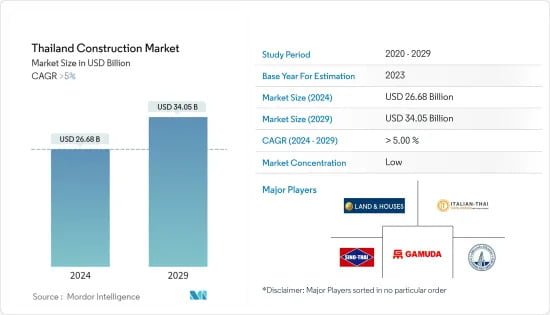The construction industry in Thailand is poised for significant growth as it heads into 2024. With a market size expected to reach approximately USD 26.68 billion, the Thailand Construction Market Trends 2024 highlight several important factors, including technological advancements, regulatory changes, and the impact of government policies. This article explores these trends and their implications for the construction sector.

Technological Advancements
One of the most exciting developments in Thailand’s construction market is the increasing use of technology. Construction companies are adopting innovative tools to improve efficiency and reduce costs. For example, Building Information Modeling (BIM) is becoming more common. BIM allows architects and engineers to create detailed 3D models of buildings, which helps in planning and reduces errors during construction.
Additionally, the Internet of Things (IoT) is making its way into construction. IoT devices can monitor construction sites in real-time, tracking everything from equipment usage to worker safety. These technologies not only streamline processes but also enhance safety and project management.
Moreover, automation and robotics are starting to play a role in construction. Automated machinery can perform repetitive tasks, allowing workers to focus on more complex aspects of a project. This shift towards automation is expected to increase productivity and reduce labor costs, which is crucial in a market facing a skilled labor shortage.
Regulatory Changes
Regulatory changes are also shaping the construction landscape in Thailand. The government is working to simplify the permitting process, which has historically been a barrier to timely project completion. By streamlining regulations, the government aims to encourage both domestic and foreign investments in construction.
The Thai government is also focusing on sustainable building practices. New regulations are being introduced to promote energy-efficient designs and the use of eco-friendly materials. These changes are in line with global trends towards sustainability and are expected to attract investment in green construction projects.
Furthermore, the government is actively promoting the Eastern Economic Corridor (EEC), a flagship initiative aimed at boosting infrastructure and industrial development in the eastern region of Thailand. This initiative includes significant investments in transportation, logistics, and smart city projects, which will create numerous opportunities for construction companies.
Impact of Government Policies
But how do these policies impact the Thailand Construction Market Trends 2024? Government policies are a crucial driver of growth in the construction sector. The Thai government has committed to investing heavily in infrastructure projects, including roads, bridges, and public transportation systems. These investments are expected to enhance connectivity and support economic growth, ultimately driving demand for construction services.
For instance, the EEC project is expected to attract over THB 300 billion (USD 9.5 billion) in private investments. This influx of capital will lead to numerous construction projects, creating jobs and stimulating economic activity in the region.
Additionally, the government is increasing its focus on affordable housing. With a growing population and rising urbanization, there is a pressing need for quality housing. The government’s initiatives to build affordable housing units will not only meet this demand but also provide opportunities for construction firms to engage in large-scale projects.
Challenges Ahead
Despite the positive outlook, the construction industry in Thailand faces challenges. High construction costs, including materials and labor, continue to be a concern. Additionally, political and economic uncertainties can lead to project delays and cost overruns. Companies must navigate these challenges while adapting to the evolving market landscape.
Looking at the explanation above, we can conclude that Thailand Construction Market Trends 2024 indicates a vibrant and evolving industry. As the country moves forward, stakeholders in the construction sector must remain agile and innovative to capitalize on these trends. By embracing technology and aligning with government initiatives, construction companies can thrive in this dynamic market and contribute to the country’s economic development.

